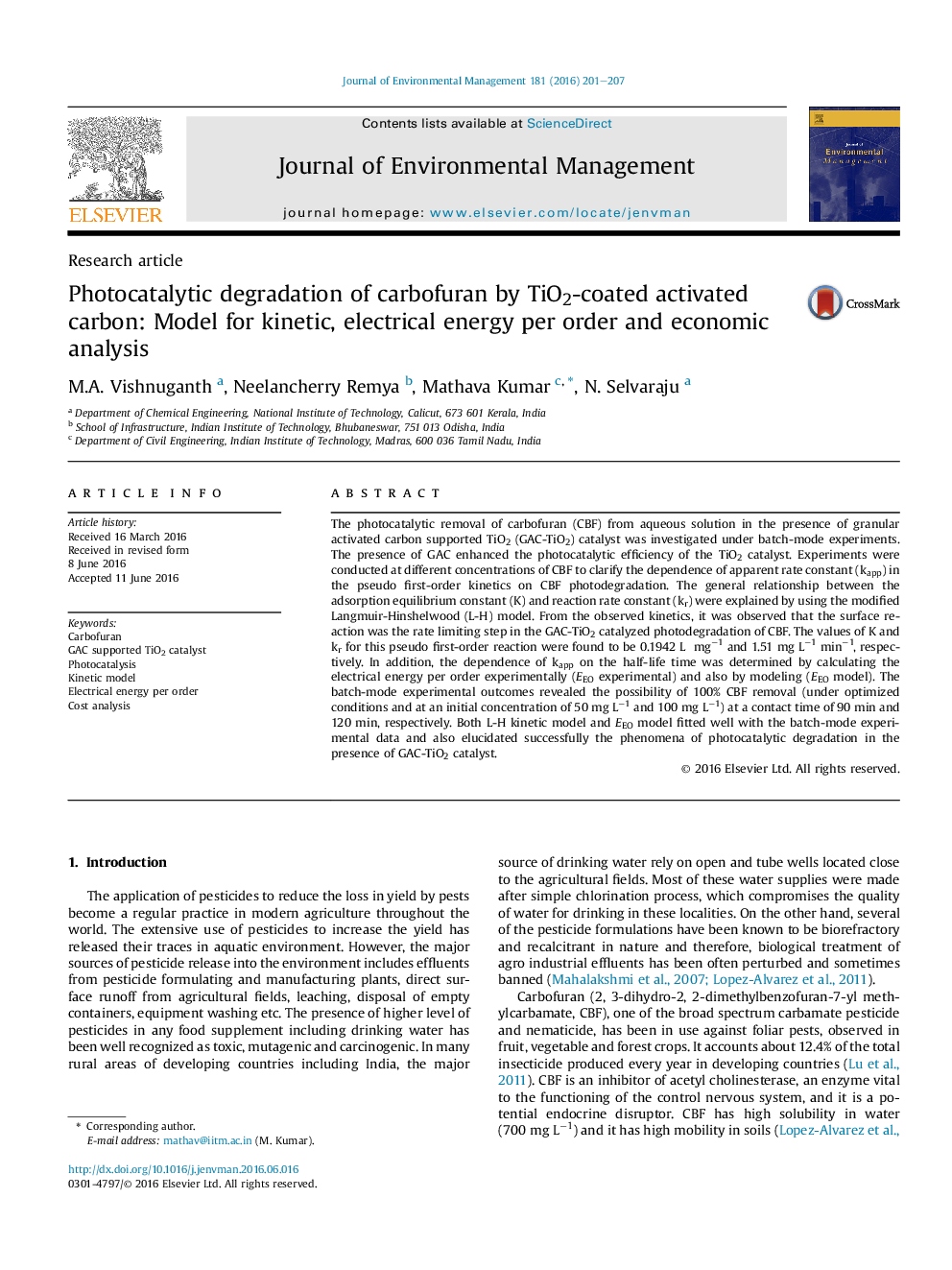| Article ID | Journal | Published Year | Pages | File Type |
|---|---|---|---|---|
| 7479511 | Journal of Environmental Management | 2016 | 7 Pages |
Abstract
The photocatalytic removal of carbofuran (CBF) from aqueous solution in the presence of granular activated carbon supported TiO2 (GAC-TiO2) catalyst was investigated under batch-mode experiments. The presence of GAC enhanced the photocatalytic efficiency of the TiO2 catalyst. Experiments were conducted at different concentrations of CBF to clarify the dependence of apparent rate constant (kapp) in the pseudo first-order kinetics on CBF photodegradation. The general relationship between the adsorption equilibrium constant (K) and reaction rate constant (kr) were explained by using the modified Langmuir-Hinshelwood (L-H) model. From the observed kinetics, it was observed that the surface reaction was the rate limiting step in the GAC-TiO2 catalyzed photodegradation of CBF. The values of K and kr for this pseudo first-order reaction were found to be 0.1942 L mgâ1 and 1.51 mg Lâ1 minâ1, respectively. In addition, the dependence of kapp on the half-life time was determined by calculating the electrical energy per order experimentally (EEO experimental) and also by modeling (EEO model). The batch-mode experimental outcomes revealed the possibility of 100% CBF removal (under optimized conditions and at an initial concentration of 50 mg Lâ1 and 100 mg Lâ1) at a contact time of 90 min and 120 min, respectively. Both L-H kinetic model and EEO model fitted well with the batch-mode experimental data and also elucidated successfully the phenomena of photocatalytic degradation in the presence of GAC-TiO2 catalyst.
Related Topics
Physical Sciences and Engineering
Energy
Renewable Energy, Sustainability and the Environment
Authors
M.A. Vishnuganth, Neelancherry Remya, Mathava Kumar, N. Selvaraju,
